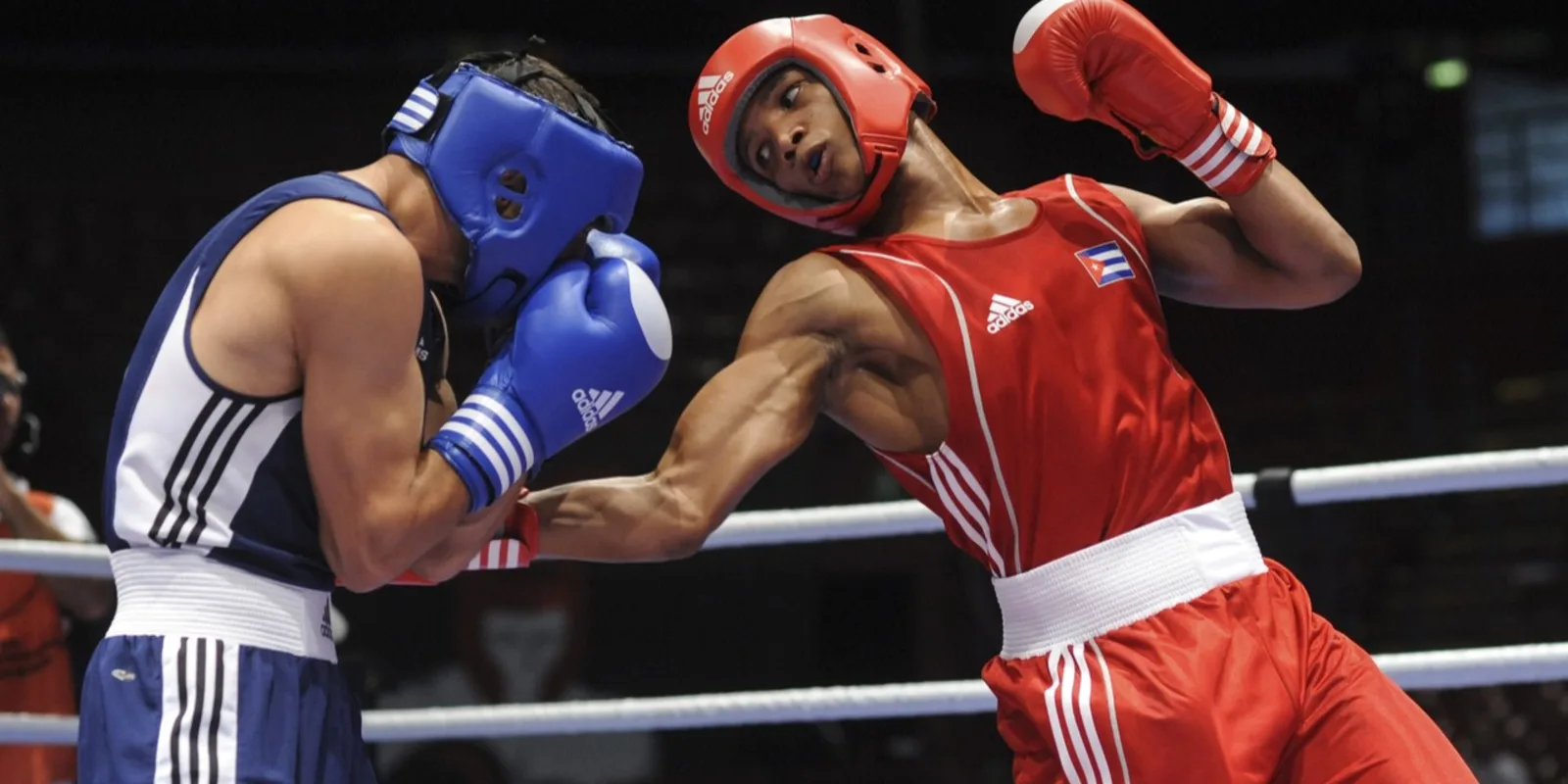
I recognized the 55-year-old black man in my office as one of the best professional Detroit boxers since Joe Louis or Tommy Hearns. He’d been a contender, and now he was sick. I’d been an amateur boxer and felt a bond. I wanted to help him.
“I’ve heard of you. You were famous,” I said.
“Back in the day,” he told me.
“I follow boxing. I fought in the Detroit Golden Gloves tournament in 1968,” I said. As a 65-year-old white guy from the ‘burbs, I tried to establish common ground.
“Right after the riots?” he asked. “Why?”
“I wanted to understand why the races couldn’t get along.” I said. “Muhammad Ali was my hero. He spoke the truth to authority.”
“And paid the price.”
“Unfortunately,” I said. “But he never sunk low enough to hate.”
“Boxing can cure hate,” he said. “Were you any good?”
“Not bad for a white guy,” I said.
He smiled and removed an old black and white photograph from his wallet. It showed him taking a fighting pose in front of the Twenty Grand in Las Vegas. He shared the marquee with The Dramatics.
The image of The Dramatics on the marquee made me pause.
“They were at the Algiers in downtown Detroit the night those kids were murdered.”
“My uncle was there too. He escaped, hid out in Reverend Franklin’s church, Aretha’s dad. Police were looking for him.”
“Why?” I asked.
“Don’t know. Cops back then were bad news. They’d ride in Buick Roadmasters, four of them; only one in uniform and they’d stop and clobber you for nothing. The ‘Big Four’ used rubber hoses.”
“The movie Detroit is about the Algiers.”
“Same old shuck and jive. I don’t want to see a story by a white director,” he said. “Should be Spike Lee, somebody who knows.”
Turning back to his medical condition, I told him his kidneys were failing and he’d need dialysis soon. He didn’t flinch, accepting the verdict as if he’d just lost to a hometown decision. The big money didn’t want him to win.
“Doc, I don’t want to go on the machine. What about a new kidney?”
“It’s difficult to go directly to a kidney transplant,” I said. “There’s a long waiting list.”
“Damn,” he said. “I’ve seen too many brothers decline on dialysis.”
I nodded. “Black people have a four times higher incidence of kidney failure than Caucasians.”
“How come?”
“Genetic, environmental,” then I said, “There is another option that could help. If you are willing to take a kidney that is not the best quality, an extended donor kidney, you may be able to avoid dialysis.”
“What do you mean?”
“An extended donor kidney is a kidney that may not work. It’s a risk, but there are more available.”
“If it works, I avoid dialysis?”
“Yes.”
“Every time I stepped into the ring I took a risk. I fought Ernie Shavers. He could kill you with either hand. This is no different,” he said. “Doc, what would you do?”
“I’d rather take a chance with an extended donor kidney than fight Ernie Shavers.”
“You’re not experimenting?” he asked.
The question of medical experimenting brought to mind the racist Tuskegee syphilis study that ended in 1973, the year I entered medical school. The same professors who interviewed me and evaluated my fitness to become a physician did not protest. Shame on them.
Indeed, the first physician who did protest was Dr. Irwin Schatz of Detroit’s Henry Ford Hospital. He complained to the Public Health Service, who never replied. Shame on them.
“No, this is not an experiment,” I said.
“I trust you.”
I placed him in the hands of the transplant team. Three months later he received a kidney. It worked. When he returned to my clinic, he was fit. He’d gained twenty pounds, and his health was robust.
“Doc, I never knew how bad I felt,” he said. “Funny, the kidney was from a white man. We’re all the same on the inside where you can’t see color. It’s too dark in there.”
“We have interchangeable parts. Now we need interchangeable hearts,” I said.
“I’ve been blessed. I’m going to give back,” he said. “I’ll open a gym. Get the kids off the street. Teach them to box. Girls too.”
“Do you think women should box?”
“Absolutely.”
“Good luck,” I said. “I’d be willing to donate money.”
“Don’t need money. I need a doctor for tournaments.”
“A doctor as in me?”
“I’d appreciate it.”
I was uneasy. My Christian Danish liberal background and patient advocacy often got me in trouble. I could feel it coming again. I was also concerned about liability. What if someone was hurt during a tournament? As a doctor who took an oath to do no harm, was it too dangerous for me to promote?
I learned that amateur boxing ranked as the twenty-third most dangerous contact sport. Not surprisingly, football and hockey were more dangerous, but I learned that soccer, basketball, lacrosse, track and field, wrestling and competitive swimming and diving had more reported injuries. Still, as the late, great, Michigan State football coach Duffy Daugherty pointed out, “Dancing is a contact sport, football is a collision sport.”
I believed amateur boxing lay in between. Still, I took out a separate liability policy. I was also concerned about venturing into black neighborhoods that might not welcome me. Then I realized that an operating room wasn’t always safe either.
I’d put his life at risk, especially with a marginal kidney. He trusted me in a medical world that many minorities viewed with suspicion. I would trust him in his world. There was a common humanity shared by a doctor and a patient, not to mention a couple of former boxers. I agreed to help him with his tournament.
At the beginning of the boxing tournament, the audience was asked to stand, put their hand over their heart, and sing our National Anthem. I was curious what the primarily black audience would do. At the time, Colin Kaepernick had just started taking a knee.
The entire audience stood and sang the Star Spangled Banner, a cappella. It seemed the fight fans understood Colin was no Muhammad Ali. It wasn’t about the sentiment, which was valid, but more about the sacrifice.
In the bout, two ten-year old boys wore headgear and fourteen-ounce gloves. They boxed for one minute with a one-minute rest in between. Their form was excellent, they had been well coached, their punches abridged and made safe by the equipment. It was more like fencing than a brutal boxing match. When it was over, the crowd applauded. Each boxer went to the four sides of the ring, stamped their feet, and bowed. The headgear was removed revealing proud smiles.
“Okay, check them out,” the ref said.
I examined the boxers. They were fine.
The fighters became older, in heavier divisions, in sixteen-ounce gloves with more authority in their punches. When a blow of any consequence landed, the fight was stopped, the fighter given an eight count and examined. In amateur boxing, things were kept very safe: as they should be. Ten vigilant people at ringside could stop a match at any time. The doctor’s decision trumped the other nine.
Females in the ring wore headgear with a faceguard and large gloves. They were ring-savvy. A sexual predator would have his hands full if he tried messing with them. With a daughter and three granddaughters, I’d been opposed to women boxing. No longer. I’m taking them to the boxing gym.
The tournament was a success. My patient thanked me and offered a stipend. I declined and told him to give it to the gym to help the kids out. He brought me a gift — an oversized navy blue beret.
“This is the same kind that Jack Johnson wore in 1909,” he said. “You’ll be fly for a white guy.”
I put it on. I didn’t look “fly,” more like Gene Wilder in “The Silver Streak.”
Over time, one of the young boxers became exceptionally skilled. He turned pro and has a record of 18 and 0. I did not want him to venture into the professional ranks. Thomas Hauser, Muhammad Ali’s biographer, called professional boxing “the red- light district of professional sports.”
I hesitated. I told my patient I was concerned about the dangers of professional boxing, particularly the risk of a fatal accident.
“How many accidental deaths occur in hospitals?”
“More than we’d like.”
“How many?”
“They say about one hundred thousand a year.”
He smiled, “Doctor, your business is a lot more deadly than mine.”
I was drafted by his pugnacious, pugilistic persuasion. In July 2018, the young man will box for the United States Championship, and after he wins that match, he will go for the World middle-weight title. In two years he went from stocking boxes at a Dollar Store to a likely world champion.
Joyce Carol Oates, wrote in her book “On Boxing”: “one of the standard arguments for not abolishing boxing is in fact it provides an outlet for the rage of disenfranchised youths, mainly black or Hispanic who can make lives for themselves.”
In 1984 the AMA took the stand that professional boxing should be banned. Professional boxing is not as dangerous as football, hockey, horse racing, auto racing, hang gliding or spelunking.
It is a lot easier to condemn a disenfranchised sport of disenfranchised participants. Why not ban college football? Medical school professors would be “on the ropes,” if they tried.
Ms. Oates opines that to outlaw boxing you must outlaw poverty.
Until poverty is outlawed, I will help my patient help his boxers. We are united and continue fighting to heal.
Olaf Kroneman, MD, is a nephrologist at Henry Ford Hospital. He graduated from the Michigan State University College of Human Medicine, interned at the Mayo Clinic in Rochester, Minnesota, then attended the University of Virginia to complete a residency in internal medicine. He completed a fellowship in nephrology at Massachusetts General Hospital and Harvard Medical School. His work has appeared in literary magazines. His story, “Fight Night,” won the Winning Writers Sports Fiction and Essay Contest, and “The Recidivist,” won the Writer’s Digest short story contest. His essay “Detroit Golden Gloves” was selected as Editor’s Choice by inscape, honoring the top nonfiction piece. In 2010, he was nominated for a Pushcart Prize for his story, “A Battlefield Decision.” He is a 2018–19 Doximity Author.






